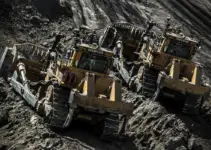The remarkable performances by athletes at the 2020 Tokyo Olympics have led to widespread speculation about the impact of new-generation high-tech running spikes, also known as super spikes. Recent research indicates that these advanced footwear technologies may have played a significant role.
Scientists from St. Edward’s University and the University of Michigan have conducted a study to quantify the difference in running economy between super spikes and traditional track spikes. Running economy, a crucial measure of performance, determines how efficiently the body utilizes oxygen.
The study compared the performance of runners wearing traditional spikes to those wearing super spikes. The results revealed that runners in super spikes experienced a 2% increase in running economy, which could potentially lead to a 1%-1.5% improvement in race times.
For instance, a 2% increase in running economy could shave off approximately 25 seconds from a 30-minute 10,000-meter race. This insightful study sheds light on the significant impact that footwear can have on a runner’s performance, especially in longer distance races, such as the 10,000-meter event.
“A 1.5%-2.0% increase in economy in an elite runner could be the difference between contending for a medal and not even qualifying for the (Olympic) Games,” Burns said. “For non-elite runners, like high school and NCAA runners, this is still a profound difference that could open doors for competitions and opportunities they might not otherwise have.”
Cutting-edge super spike technology, incorporating special foams and plates, has revolutionized track and field footwear since 2016. In the 2020 Olympics, not all athletes had access to this groundbreaking technology, sparking debates about fairness. However, with more sponsors now offering advanced footwear options, it is anticipated that most, if not all, athletes will be equipped with these innovations in Paris.
Additionally, a study comparing super spikes with new-generation running shoes found that the two resulted in similar running economy despite the latter’s heavier weight.
“Some athletes benefit from cushioning more than others, while some athletes benefit from reduced weight more than others,” Burns said. “This is highly individualized, and we don’t yet have good ways to predict who responds to which, but if athletes have a choice, as they do in high school and the NCAA, they should choose whichever feels most comfortable.”
What are the implications for the Paris Olympic Games? According to Burns, Olympic records could be broken, but an increase in the depth of fast times is expected due to the widespread availability and accessibility of super spikes.
Journal reference:
- Dustin P Joubert, Garrett M Oehlert, Eric J Jones, Geoffrey T Burns. Comparative Effects of Advanced Footwear Technology in Track Spikes and Road-Racing Shoes on Running Economy. International Journal of Sports Physiology and Performance, 2024; DOI: 10.1123/ijspp.2023-0372


